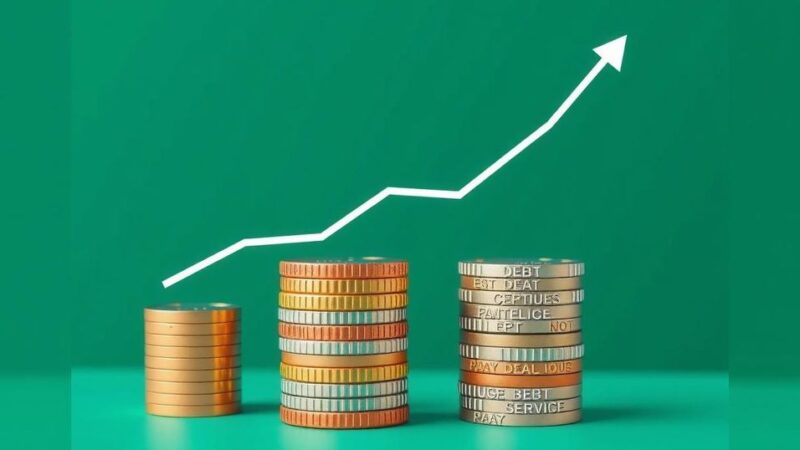President Trump’s new tariffs on Canada, Mexico, and China are set to increase consumer prices and potentially disrupt the global economy. Experts predict rising inflation, with significant impacts on everyday goods including toys and vehicles. The consequences of these tariffs may lead to both domestic economic challenges and international trade retaliations.
On Saturday, President Donald Trump is set to implement new trade penalties targeting Canada, Mexico, and China, marking a significant shift in U.S. trade policy towards these key partners. These tariffs, comprising a 25% fee on goods from Canada and Mexico and a 10% tax on imports from China, aim to leverage America’s financial might in global negotiations. However, experts caution that these penalties may result in rising inflation and disruptions in the global economic landscape.
Trump views these tariffs as a means to reshape international trade, stating, “You see the power of the tariff. Nobody can compete with us because we have by far the biggest piggy bank.” He hopes that imposing these tariffs will prompt other countries to negotiate more favorable trade agreements, especially concerning issues like illegal immigration and drug smuggling from Mexico and Canada.
The tariffs will increase costs for American companies importing goods from these nations, as these companies will typically pass higher costs onto consumers. As a consequence, economists expect that consumers will bear the brunt of these tariffs, seeing price hikes across various goods, including electronics, toys, furniture, and more.
Tariffs are essentially taxes on imports that can discourage companies from sourcing products from abroad by increasing their cost. The U.S. Customs and Border Protection collects these tariffs at multiple ports, and the rates can vary widely. For instance, the U.S. currently imposes tariffs ranging from 2.5% on passenger vehicles to 6% on golf shoes, in contrast to the zero tariffs under existing trade agreements within North America.
It is important to note that, contrary to Trump’s assertions, tariffs are paid by American importers, not foreign countries. Consequently, businesses often raise prices for consumers to offset these costs, with studies revealing that tariffs tend to disproportionately affect lower-income households. A 2019 study demonstrated that tariffs imposed by Trump on Chinese imports inflicted greater economic damage on China than the U.S.
Predicted impacts of the tariffs include significant price increases for everyday consumer products. For example, the price of toys from China could increase by over 56% under the new tariffs implemented by Trump, transforming a $20 Barbie doll into a costlier product. Moreover, goods such as cars, avocados, and winter clothing may also see substantial price hikes due to increased import taxes.
Historically, tariffs have been used as a strategy to protect domestic industries. Under the previous administration, tariffs had been aligned with an aim to penalize countries for unfair trade practices. The efficacy of tariffs as a protective measure remains debated, with studies indicating that such taxes may not necessarily restore jobs in American manufacturing industries.
Furthermore, economists warn that these tariffs could instigate retaliatory measures from other countries, as occurred with the European Union and China in past trade conflicts. Projections estimate that Trump’s latest tariffs could lead to an increase in inflation by 0.5 percentage points, negatively influencing economic growth and consumer prices within the United States.
Ultimately, although Trump advocates for tariffs as a tool for economic revitalization and negotiation, their implementation may lead to numerous challenges, including increased prices for consumers and potential international trade conflicts. The outcomes of these tariffs remain uncertain as debates concerning their economic implications continue.
President Trump’s impending tariffs on Mexico, Canada, and China represent a revival of protectionist trade policies in the U.S. as a means to address trade imbalances and domestic industries’ challenges. Economically, tariffs have the potential to raise consumer prices and may lead to retaliatory actions from the affected countries. For consumers, this development raises concerns regarding higher costs of goods and the overall inflationary impact on the economy.
In summary, President Trump’s proposed tariffs could have far-reaching implications for American consumers, leading to increased prices for numerous goods while simultaneously affecting trade relationships with key partners. The tariffs might serve as a strategic economic maneuver, yet they are likely to place a heavier financial burden on consumers, particularly those in lower-income brackets. The long-term effects on the U.S. economy remain uncertain, warranting careful consideration and analysis moving forward.
Original Source: www.nbcchicago.com






